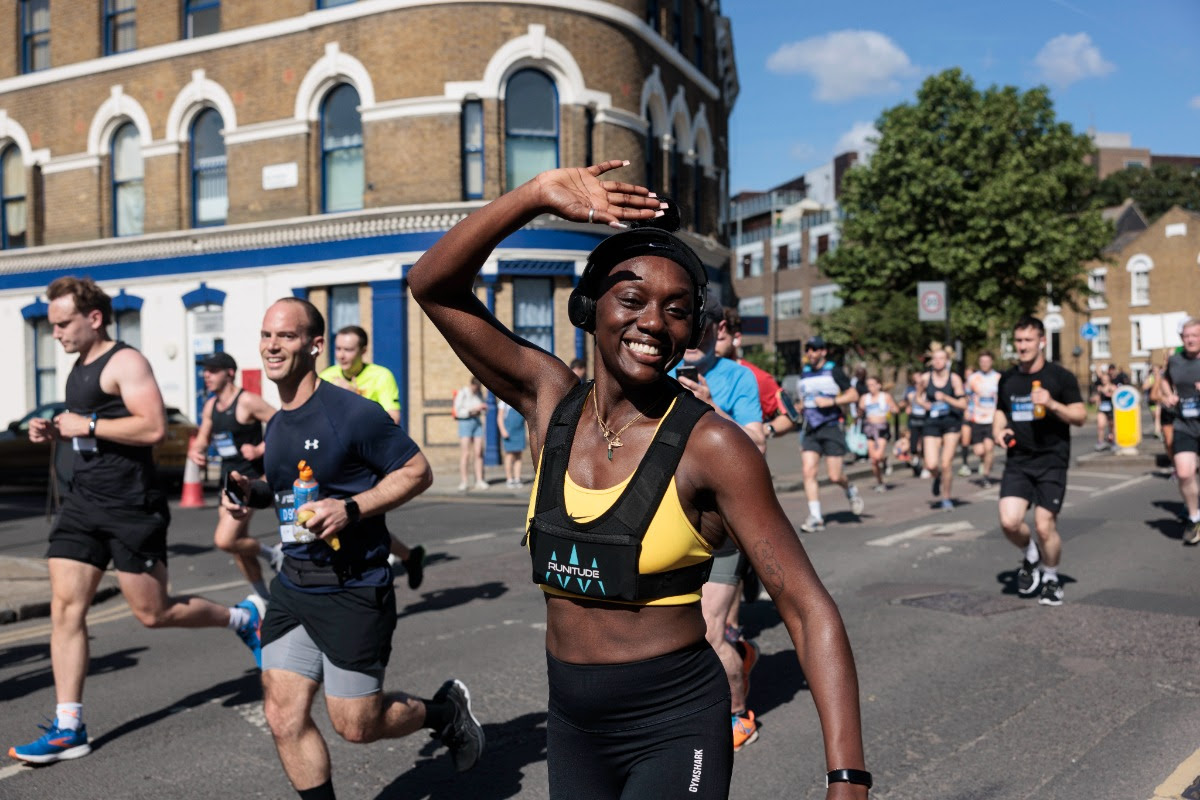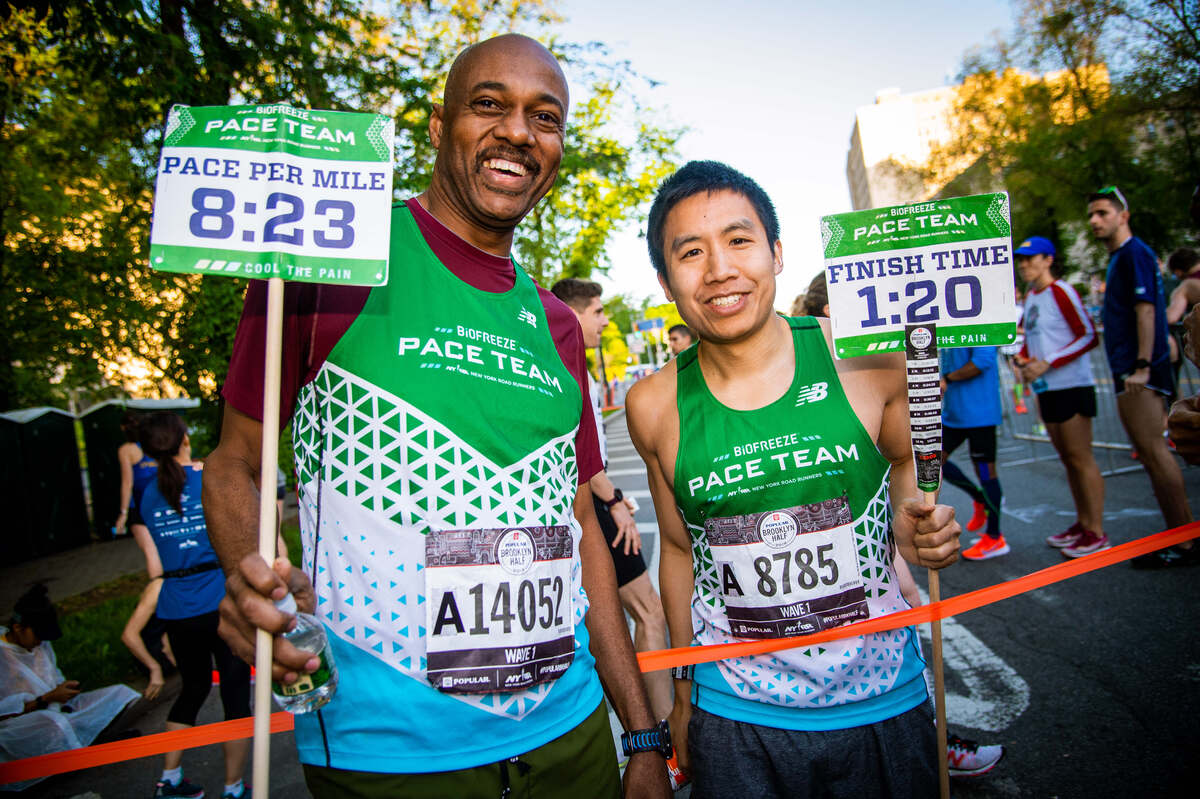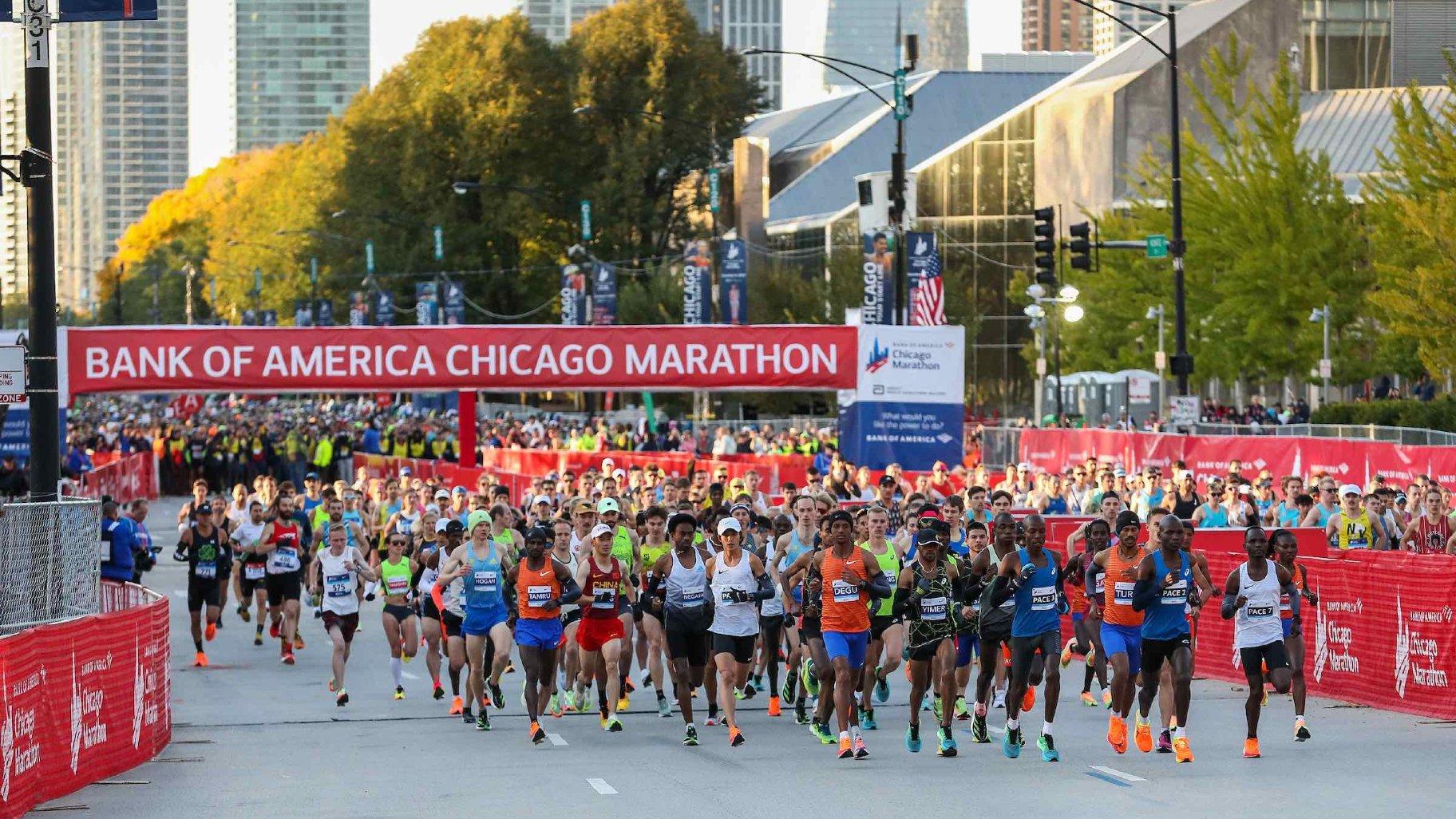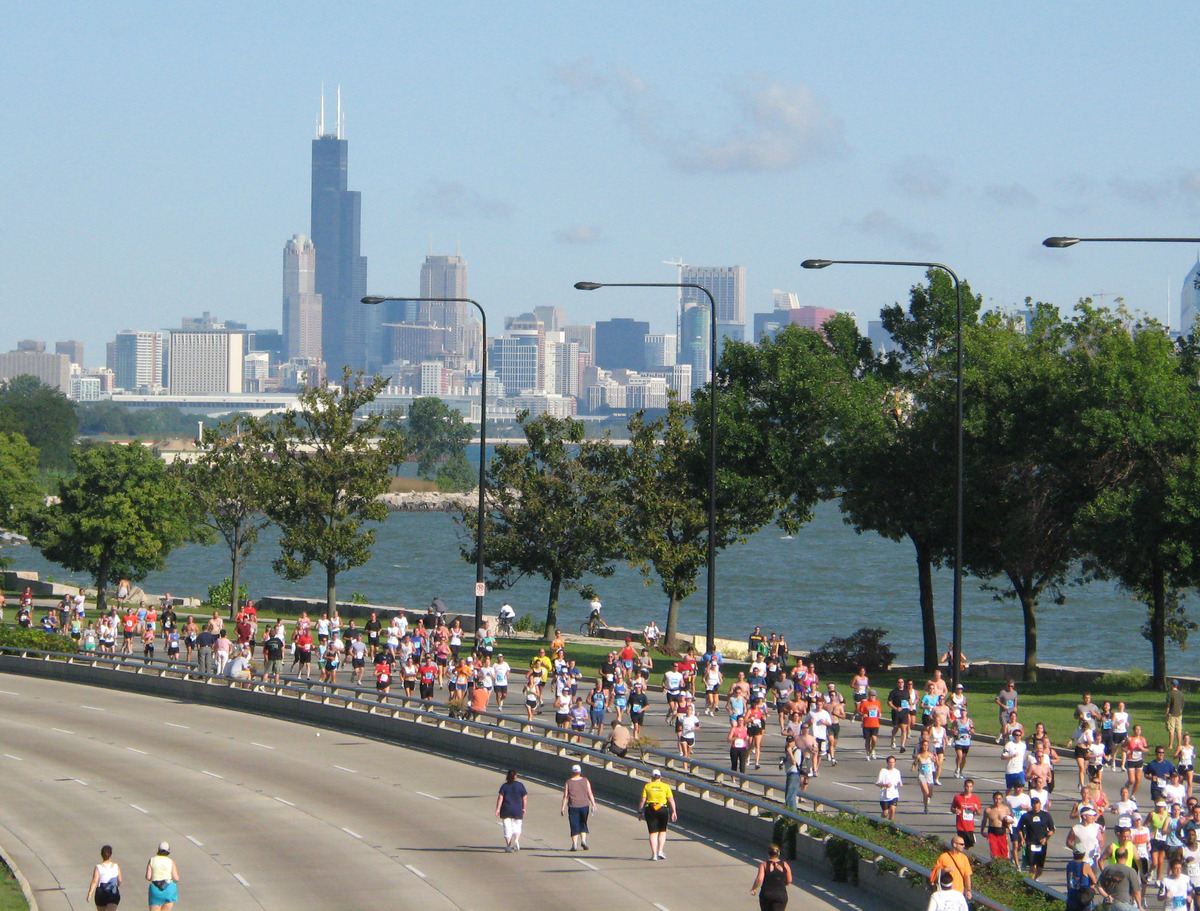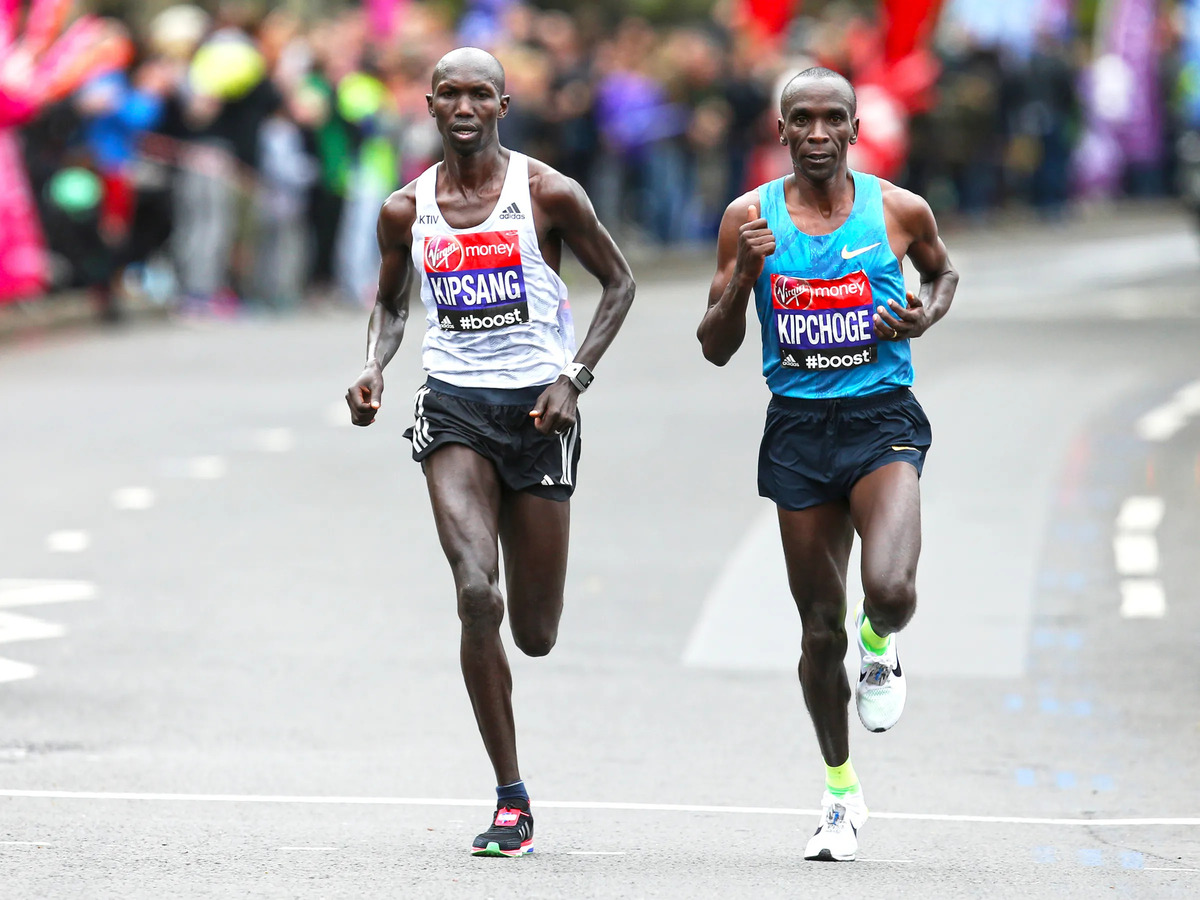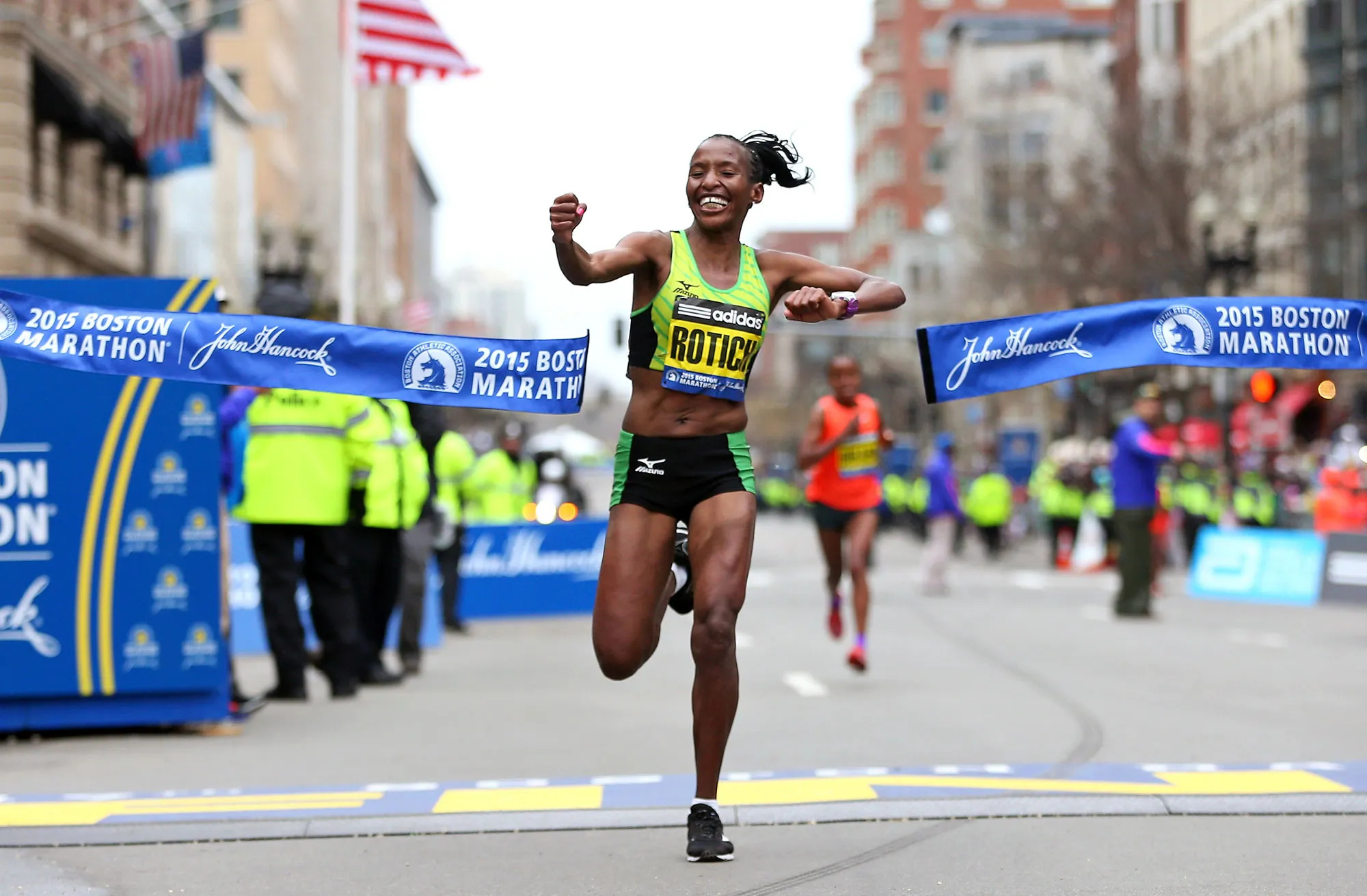

Featured
How Fast Can You Run A Marathon
Modified: January 22, 2024
Featured: Discover how fast you can run a marathon and challenge yourself to reach your goals. Learn about training, preparation, and tips for achieving your best time.
Introduction
Marathon running is a sport that captivates athletes and spectators alike. The sheer determination and physical prowess required to complete 26.2 miles is awe-inspiring. Whether you’re a seasoned runner or just starting to explore the world of long-distance running, one question that may come to mind is: how fast can you run a marathon?
The answer to this question depends on a variety of factors, including genetics, training, nutrition, and mental strategies. In this article, we will delve into these factors to help you understand what it takes to improve your marathon running speed.
Running a marathon is not only a physical challenge but also a mental one. It requires discipline, perseverance, and a strong will to push through the inevitable pain and fatigue. However, with the right approach and training, you can significantly improve your marathon finish time and achieve your personal best.
While every runner’s journey is unique, there are certain universal principles that can help guide you towards faster marathon times. By focusing on areas such as training, nutrition, mental strategies, pacing, and recovery, you can unlock your full potential as a marathon runner.
In the following sections, we will explore each of these aspects in detail, providing practical tips and insights to optimize your marathon running speed. Whether you’re aiming for a sub-four-hour marathon or hoping to qualify for prestigious races such as the Boston Marathon, this article will provide you with the knowledge and tools to improve your performance.
Factors Affecting Marathon Running Speed
Several factors can impact one’s marathon running speed. Understanding these factors and how they influence performance can help you identify areas to focus on for improvement. Here are some key factors to consider:
- Genetics: While genetic factors play a role in determining your running potential, it’s important to remember that anyone can become a successful marathon runner with proper training and dedication. Genetics may affect factors such as aerobic capacity, muscle fiber type, and body composition, but they don’t define your limits.
- Training: Training is perhaps the most critical factor in improving marathon running speed. Structured and consistent training programs that include a mix of long runs, speed workouts, tempo runs, and cross-training can help improve aerobic endurance, strength, and running efficiency.
- Running Form: Your running form affects your efficiency and energy expenditure. Strive for proper running mechanics, including a slight forward lean, relaxed arms, quick turnover, and a balanced foot strike.
- Muscle Strength and Flexibility: Strong and flexible muscles can help prevent injuries and improve running economy. Incorporate strength training exercises, such as lunges, squats, and core exercises, into your training routine.
- Nutrition and Hydration: Proper nutrition and hydration are essential for optimal performance. Fueling your body with a balanced diet, including a mix of carbohydrates, protein, and healthy fats, can provide the energy needed for long-distance running. Staying hydrated before, during, and after your runs is also crucial.
- Mental Strength: Mental fortitude plays a significant role in marathon running. Developing strategies to stay focused, positive, and motivated can help you push through challenging moments during a race.
It’s important to note that no single factor determines marathon running speed. Instead, it’s the combination of these factors and how they work together that ultimately determines your performance. By understanding and addressing these factors, you can make meaningful improvements in your marathon running speed.
Training for a Faster Marathon
Training is the foundation for improving your marathon running speed. A well-structured and progressive training program is essential for building endurance, speed, and overall running efficiency. Here are some key tips for training for a faster marathon:
- Set Specific Goals: Determine your desired marathon finish time and set realistic and achievable goals based on your current fitness level. This will help guide your training plan and provide motivation throughout the process.
- Follow a Training Program: Choose a training program that suits your fitness level and time availability. It’s recommended to select a program that includes a mix of easy runs, long runs, speed workouts, and recovery days. Gradually increase the distance and intensity of your runs over time.
- Include Speed Workouts: Incorporate speed workouts into your training routine to improve your running economy and increase your lactate threshold. Examples include interval training, tempo runs, and fartlek sessions. These workouts will help you run at a faster pace for longer durations.
- Do Long Runs: Long runs are crucial for building endurance and mental toughness. Gradually increase the distance of your long runs to develop the necessary aerobic capacity to sustain a faster marathon pace. Aim to complete at least one 20-mile run before race day.
- Cross-Train: Incorporate cross-training activities such as cycling, swimming, or strength training to improve overall fitness and reduce the risk of overuse injuries. These activities also provide a break from running while still maintaining cardiovascular fitness.
- Listen to Your Body: Pay attention to your body’s signals and adjust your training as needed. Rest and recovery days are just as important as the intense training sessions. Overtraining can lead to fatigue, burnout, and increased risk of injuries.
- Practice Race-Day Scenarios: Simulate race-day conditions during your training to familiarize yourself with pacing, nutrition, and hydration strategies. This will minimize the chance of surprises and help you strategize for optimal performance on race day.
Remember, consistency is key when it comes to training for a faster marathon. Be patient, trust the process, and gradually progress your training to avoid injury. By following a well-designed training program, incorporating speed workouts and long runs, and allowing for adequate rest and recovery, you’ll be well on your way to achieving your goal of running a faster marathon.
Nutrition and Hydration for Optimal Performance
Proper nutrition and hydration are vital for fueling your body and optimizing your performance during a marathon. Here are some key considerations for nutrition and hydration:
- Pre-Race Nutrition: Prior to the marathon, focus on consuming a balanced meal rich in carbohydrates, moderate in protein, and low in fat. This will top up your energy stores and provide sustained fuel for the race.
- During-Race Fueling: Consume carbohydrates during the marathon to maintain your energy levels. This can be done through energy gels, sports drinks, or easily digestible snacks. Experiment with different options during your long training runs to find what works best for you.
- Hydration: Adequate hydration is essential for preventing dehydration and maintaining performance. Drink water and/or sports drinks at regular intervals during the race. It’s important to practice your hydration strategy during training to avoid any digestive issues on race day.
- Electrolyte Balance: Loss of electrolytes through sweat can impact performance. Consider using electrolyte supplements or sports drinks that provide sodium, potassium, and other minerals to replenish what is lost during prolonged exercise.
- Post-Race Recovery: After completing the marathon, prioritize post-race recovery nutrition. Consume a combination of carbohydrates and protein within 30 minutes of finishing to help replenish glycogen stores and aid muscle repair and recovery.
- Individualized Approach: Nutrition and hydration needs can vary from person to person. It’s important to experiment and find what works best for your body during training. Consult with a sports nutritionist or registered dietitian for personalized guidance.
Remember to practice your nutrition and hydration strategies during your long training runs to ensure they work well for you on race day. Avoid trying anything new or untested on race day to minimize the risk of digestive issues or discomfort. Additionally, stay well-hydrated in the days leading up to the marathon and monitor your urine color to gauge your hydration status.
By providing your body with the right fuel and hydration before, during, and after the marathon, you’ll optimize your performance and enhance your chances of achieving a faster finishing time.
Mental Strategies to Improve Marathon Running Speed
Running a marathon is not just a test of physical endurance, but also a mental challenge. Developing strong mental strategies can help you push through difficult moments and improve your marathon running speed. Here are some key mental strategies to consider:
- Visualization: Use visualization techniques to mentally rehearse your race. Picture yourself running strong, feeling confident, and maintaining a fast pace. Visualize crossing the finish line with your desired finishing time in mind.
- Positive Self-Talk: Replace negative thoughts with positive affirmations. Use phrases such as “I am strong,” “I can do this,” and “I am capable of achieving my goals.” This positive self-talk can help boost your confidence and keep you motivated during challenging moments.
- Break the Race into Smaller Goals: Instead of focusing solely on the full 26.2 miles, break the race into smaller, more manageable segments. Set intermediate goals, such as reaching the next aid station or maintaining a certain pace for the next mile.
- Mindfulness and Focus: Stay present and focused during the race. Instead of worrying about the miles ahead or getting caught up in negative thoughts, redirect your attention to your breath, your form, and the rhythm of your feet hitting the ground.
- Use Mantras: Repeat short, positive phrases or mantras to keep you motivated and focused. Mantras like “One step at a time” or “I am strong, I am fast” can help you stay mentally strong when the going gets tough.
- Utilize Distractions: Distract yourself from any pain or fatigue by focusing on external factors, such as the scenery, cheering spectators, or engaging in conversation with other runners. This can help take your mind off the physical discomfort.
- Learn from Setbacks: It’s normal to face setbacks during a marathon, whether it’s a missed target pace or a challenging stretch of the course. Rather than dwelling on these setbacks, learn from them and use them as opportunities for growth and improvement.
- Build Mental Toughness: Like physical endurance, mental toughness can be developed through training. Gradually expose yourself to mental challenges during your training runs, such as pushing through fatigue or running in adverse weather conditions.
Remember, your mind can be your most powerful asset during a marathon. By incorporating these mental strategies into your training and race-day preparation, you can overcome obstacles, stay focused, and improve your marathon running speed.
Pace Setting and Race Strategy
Pace setting and race strategy are crucial elements that can greatly impact your marathon running speed. Developing a well-thought-out plan and sticking to your desired pace can help ensure a successful race. Here are some key considerations for pace setting and race strategy:
- Know Your Goal Pace: Determine the pace you need to maintain in order to achieve your desired finishing time. This should be based on your fitness level, training, and previous race performances. It’s important to set a challenging yet realistic goal.
- Start Slow: Many marathoners make the mistake of starting too fast, which can lead to early fatigue and a slower overall performance. Begin the race slightly slower than your goal pace and gradually increase your speed as the race progresses.
- Monitor and Adjust: Regularly check your pace during the race, either by using a GPS watch or by taking note of your mile splits. If you find yourself running too fast or too slow, make necessary adjustments to get back on track.
- Use Pacers: Some marathons provide pacers who run at specific target finishing times. Running with a pacer can help you gauge your pace and stay on track. Be sure to start with the correct pacer group based on your goal time.
- Break the Race into Segments: Mentally divide the race into segments and focus on running each segment at a specific pace. For example, you can aim to maintain a certain pace for the first half of the race, then increase your pace slightly for the second half.
- Factor in Course Elevation: Consider the elevation profile of the course when setting your pace. If the course has significant hills, adjust your pace accordingly. Prepare mentally for challenging segments and aim to maintain a consistent effort level.
- Take Advantage of Aid Stations: Plan your fuel and hydration strategy around the aid stations. This will prevent unnecessary time spent at the stations and help maintain your pace. Practice grabbing fluids and consuming fuel during your training runs.
- Stay Mentally Strong: Expect challenging moments during the race, but remember that they are temporary. Stay focused on your pace, rely on your training and mental strategies, and visualize your desired outcome to keep pushing forward.
- Finish Strong: As you approach the final miles of the race, dig deep and find the strength to finish strong. If you have energy left, increase your pace to finish with a final burst of speed and achieve your goal time.
Developing a solid pace-setting and race strategy is essential for running a faster marathon. By knowing your goal pace, starting conservatively, monitoring your pace throughout the race, and making necessary adjustments, you can optimize your performance and achieve your desired finishing time.
The Importance of Rest and Recovery
Rest and recovery are often overlooked aspects of marathon training, but they play a critical role in improving your marathon running speed. Giving your body time to recover allows your muscles to repair and rebuild, ultimately leading to improved performance. Here’s why rest and recovery are essential:
- Muscle Repair and Rebuilding: Intense training places stress on your muscles, breaking them down. Rest days and recovery periods allow your muscles to repair and rebuild, becoming stronger and more resilient for future workouts.
- Injury Prevention: Overtraining and insufficient recovery can increase your risk of injuries, such as stress fractures, muscle strains, and tendonitis. Rest days provide the necessary time for your body to heal and reduce the likelihood of developing injuries.
- Energy Replenishment: Rest days allow your energy stores, such as glycogen, to be replenished. This ensures that you have the fuel needed to perform at your best during intense training sessions and on race day.
- Mental Refreshment: Rest and recovery not only benefit your physical well-being but also your mental state. Taking breaks from training allows you to recharge mentally, reducing the risk of burnout and keeping your passion for running alive.
- Adaptation and Performance Improvement: The body adapts and improves during rest periods. The gains made from hard training are realized during recovery, as your body becomes more efficient at utilizing oxygen, clearing metabolic waste, and repairing muscle damage.
- Sleep Quality: Quality sleep is an integral part of rest and recovery. Aim for 7-9 hours of uninterrupted sleep each night. Sleep is when your body goes through important physiological processes that aid in recovery and preparation for future training sessions.
- Active Recovery: Active recovery, such as easy runs, swimming, or cycling, can aid in muscle regeneration by increasing blood flow and reducing muscle soreness. Engaging in low-intensity activities on rest days promotes recovery without adding excessive strain on your body.
Remember, rest and recovery are not signs of weakness, but rather essential components of a successful marathon training program. Incorporate regular rest days, schedule recovery weeks into your training plan, and listen to your body’s signals. If you feel excessively fatigued, experience persistent muscle soreness, or notice a decline in performance, it may be a sign that you need additional rest.
By prioritizing rest and recovery, you’ll not only reduce the risk of injury but also maximize your training adaptations, allowing for improved marathon running speed and better overall performance.
Avoiding Common Mistakes and Injury Prevention
When it comes to marathon running, avoiding common mistakes and taking proactive measures for injury prevention are essential for maintaining a consistent training schedule and improving your marathon running speed. Here are some key considerations to keep in mind:
- Gradual Progression: One of the most common mistakes among marathon runners is increasing mileage or intensity too quickly. Gradually progress your training volume and intensity to allow your body to adapt. Sudden jumps in training load can lead to overuse injuries.
- Proper Warm-Up: A thorough warm-up is crucial before each run. Include dynamic stretches and exercises to loosen up your muscles and increase blood flow. This prepares your body for the demands of running and reduces the risk of injuries.
- Strength Training: Incorporate strength training exercises into your weekly routine to improve muscular strength and stability. Focus on exercises that target the muscles used for running, such as squats, lunges, planks, and hip exercises. Stronger muscles can better support your joints and help prevent injuries.
- Listen to Your Body: Pay attention to any signs of pain, discomfort, or fatigue. Ignoring signals from your body can lead to overuse injuries. Take rest days when needed and seek professional advice if any pain or discomfort persists.
- Cross-Training: Engage in cross-training activities, such as cycling, swimming, or yoga, to provide variety in your training and reduce the repetitive stress on your body. Cross-training can improve overall fitness while giving your running muscles a needed break.
- Proper Footwear: Invest in a good pair of running shoes that provide appropriate support and cushioning for your foot type and running style. Replace your shoes regularly to ensure maximum comfort and shock absorption.
- Flexibility and Mobility: Incorporate regular stretching and mobility exercises into your routine to maintain flexibility and prevent muscle imbalances. This can help improve running efficiency and reduce the risk of injuries.
- Rest and Recovery: As mentioned earlier, rest and recovery are crucial for injury prevention. Allow your body sufficient time to heal and recharge by incorporating rest days into your training schedule and prioritizing quality sleep.
- Proper Nutrition: Fueling your body with the right nutrients is essential for injury prevention. Ensure you consume a balanced diet that includes an adequate amount of carbohydrates, protein, healthy fats, vitamins, and minerals to support your training and recovery.
By being mindful of these common mistakes and taking steps to prevent injuries, you can maintain a consistent training schedule and reduce the risk of setbacks that may hinder your marathon running speed. Remember, running is a long-term endeavor, and taking care of your body is crucial for long-term success and enjoyment in the sport.
Conclusion
Improving your marathon running speed is a challenging yet achievable goal. By considering the various factors that affect performance, such as genetics, training, nutrition, and mental strategies, you can take the necessary steps to enhance your marathon running speed.
Training plays a vital role in this journey, and having a well-structured training program that includes a mix of workouts, long runs, and rest days is essential. Combining speed workouts, tempo runs, and long runs will help increase your endurance and speed, ultimately improving your marathon finish time.
Proper nutrition and hydration are equally important in fueling your body and optimizing performance. Consuming a balanced diet, staying hydrated, and practicing fueling strategies during training runs will ensure you have the energy and nutrients needed for peak performance on race day.
Mental strategies, such as visualization, positive self-talk, and goal setting, can boost your mental toughness and help you push through challenging moments during a marathon. Training your mind to stay focused, present, and motivated is just as crucial as training your body.
Other important factors include determining your desired pace, strategically planning your race, and allowing for adequate rest and recovery. Pace setting and race strategy help maintain a consistent pace and avoid starting too fast, while rest and recovery provide essential time for muscle repair and growth, reducing the risk of injuries.
By avoiding common mistakes, listening to your body, and incorporating injury prevention measures, you can minimize setbacks and maintain a consistent training routine. Incorporating strength training, proper warm-ups, and cross-training activities help build a strong and resilient body capable of withstanding the demands of marathon running.
Remember, improving your marathon running speed is a gradual process that requires commitment, consistency, and patience. Embrace the journey, set realistic goals, and focus on the progress you make along the way. With dedication and the right approach, you can achieve your goals and cross the marathon finish line with a stronger, faster time.
